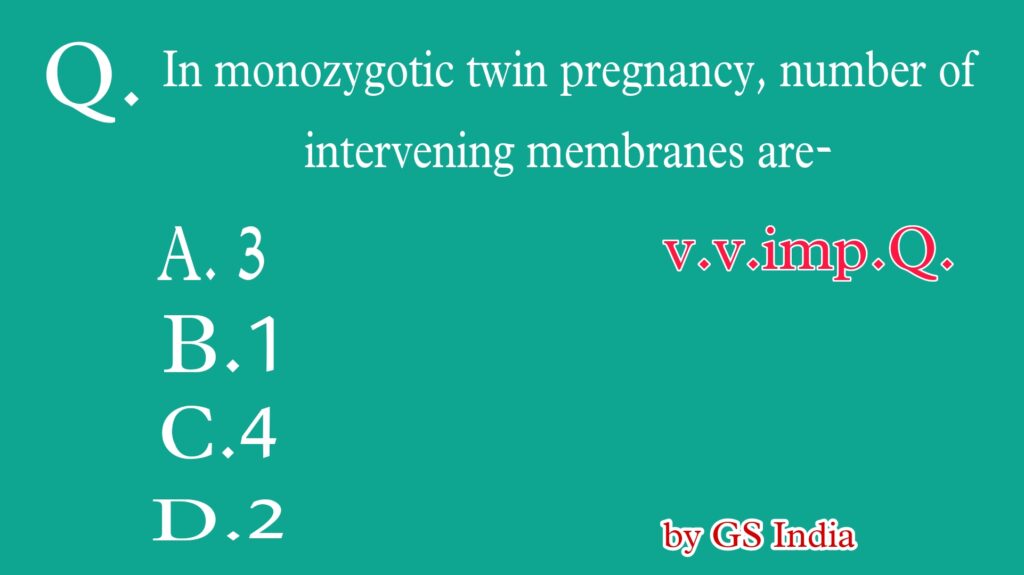
**Let us see some of the questions asked in Nursing exams, in short form and in alternate form**-
Q 1- If engaging diameter of the fetal skull is mento vertical, then presentation will be –
A – Complete vertex
B – InComplete vertex
C – Brow
D – Face
Q 2 – During face presentation, attitude of the head will be-
A – Marked deflexion
B – Complete extension
C – Partial extension
D – Flexion
Q 3 – During brow presentation, attitude of head will be-
A – Partial extension
B – Marked deflexion
C – Complete extension
D – Flexion
Q 4 – Distance between the anterior fontanelle in fetal skull to the nape of the neck, is known as-
A – Occipito frontal
B – Mento vertical
C – Suboccipito frontal
D – Submento bregmatic
Q 5 – In monozygotic twin pregnancy, number of intervening membranes are-
A – three
B – one
C – two
D – four
**The answers to the above given optional questions are given below,**
Ans 1)- C – Brow
Ans 2) – B – Complete extension
Ans 3) – A – Partial extension
Ans 4) – C – Suboccipito frontal
Ans 5) – C – two
**things to note**
Engaging diameter, This occurs when the widest diameter (usually the BPD) of the fetal presenting part passes below the plane of the maternal pelvic inlet. Generally, engagement occurs when the fetal BPD is at the level of the maternal ischial spines.
fetal skull, The skull is made up of the base of skull and the vault or cranium. The vault is made of occipital bone posteriorly, the two parietals at the sides ,and the temporal bones and frontal bones anteriorly. These bones at birth are thin,easily compressible and joined by membrane.
What are the diameters of fetal skull?
At its widest part, the fetal skull is (on average) 9.5 cm wide. This is 3.5 cm less than the widest diameter of the pelvic inlet, and 1.5 cm less than the widest diameter of the pelvic outlet.
What is different about the fetal skull?
Differences between a fetal skull and an adult skull include:- The fetal skull bones are not joined by sutures. The relative size of the fetal facial bones compared to the cranial bones are smaller in the fetal skull than for the adult. The adult has one frontal bone, the fetus frontal bone is in two halves.
What is the main function of the fetal skull?
Two key functions of the fetal skull are the protection of the brain, which is subjected to pressure as it descends through the birth canal during labour, and an ability to change shape, adapting to the process of labour in response to uterine contractions and the size and shape of the pelvis.
How many bones are in a fetal skull?
An infant’s skull is made up of 6 separate cranial (skull) bones:- Frontal bone. Occipital bone. Two parietal bones.
What is Mento vertical?
It is measured round the chin up to the vertex. It is found in partly extended head (Brow) . It is the largest diameter of the fetal skull 38 cm.
What is Mento anterior face presentation?
Face presentation is a rare unanticipated obstetric event characterized by a longitudinal lie and full extension of the foetal head on the neck with the occiput against the upper back. A vaginal birth at term is possible only if the fetus is in the mentum anterior position.
Is brow a body part?
At the junction of the forehead and the upper eyelid, the eyebrow is a transverse elevation of hair arched above the superior orbital rim. Technically, the eyebrow is considered part of the scalp and is divided into three anatomic parts: head, body, and tail.
Monozygotic twin pregnancy,
A monozygotic (MZ) twin pregnancy results from the division of single zygote following fertilisation and shares similar genetic materials. These twins are therefore always of the same gender.
Do monozygotic twins share a placenta?
Monochorionic twins are identical twins who share one placenta. This occurs in approximately 70 percent of pregnancies with identical twins. Monochorionic-monoamniotic twins are identical twins who share both a placenta and an amniotic sac.
Suboccipito frontal, Suboccipito-frontal diameter. Diameter calculated from prominence at mid frontal bone to the under-surface of the occipital bone where it joins neck .The diameter is 10.5 cm . Vertex is partially deflexed.
Intervening membranes, The intervening membrane refers to a membraneous separation between two fetuses in a twin pregnancy. Depending on the chorionicity and amnionicity, the membrane may have a number of layers. di-chorionic di-amniotic (DCDA) pregnancy. composed of two chorionic and two amniotic layers.
Thanks !!